#Transcendental Magic: Its Doctrine and Ritual
Text
“Weakness ever sympathizes with vice, because vice is a weakness which assumes the mask of strength. Madness holds reason in horror, and on all subjects it delights in the exaggerations of falsehood. The cause of all bewitchments, the poison of all philtres, the power of all sorcerers are there.”
Éliphas Lévi, Transcendental Magic: its Doctrine and Ritual
#eliphas levi#transcendental magic#Transcendental Magic: Its Doctrine and Ritual#literature#bibliophile#upload#quotes#literary#lit#occult#occultist#esoteric#magick#dogme et rituel de la haute magie#occultism#philosopher#philosophy#on horror#madness
43 notes
·
View notes
Photo

Éliphas Lévi, Transcendental Magic, Its Doctrine and Ritual
404 notes
·
View notes
Photo

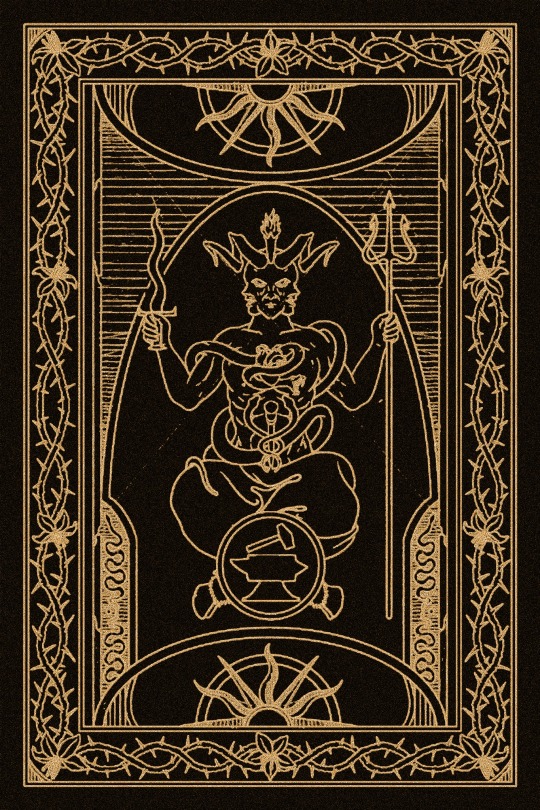
Levi’s Baphomet
The best-known modern image of Baphomet was drawn in 1856 by the French occultist Eliphas Levi, in his book Transcendental Magic: Its Doctrine and Ritual.
163 notes
·
View notes
Text

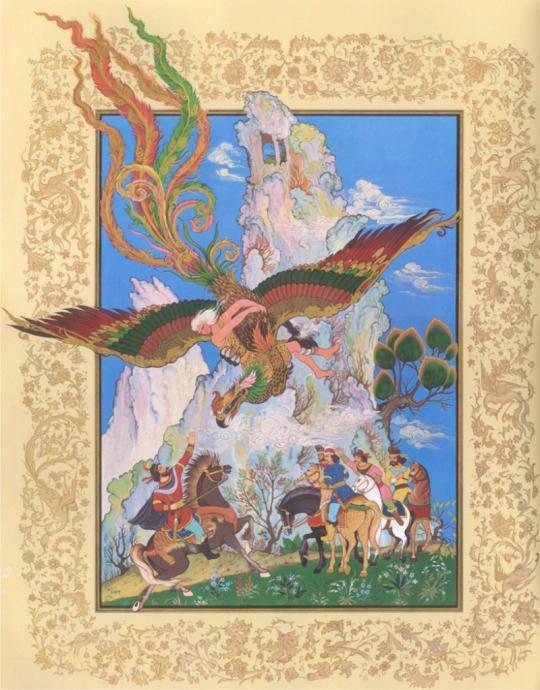
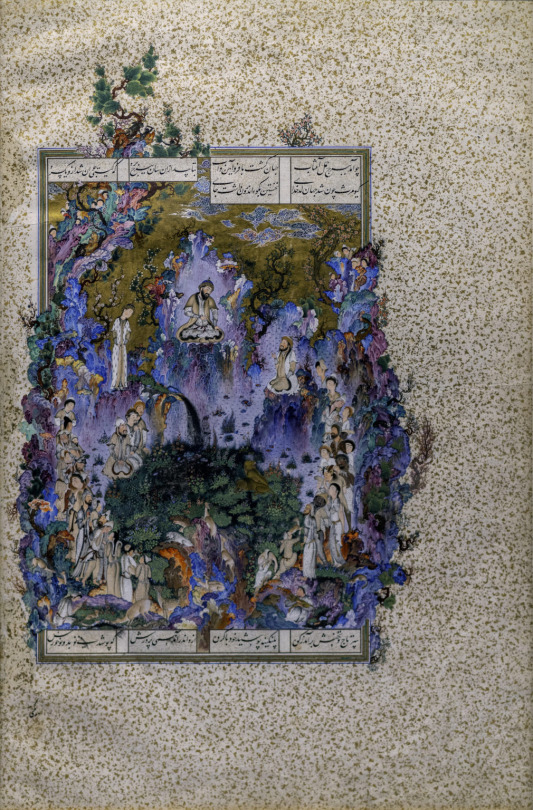
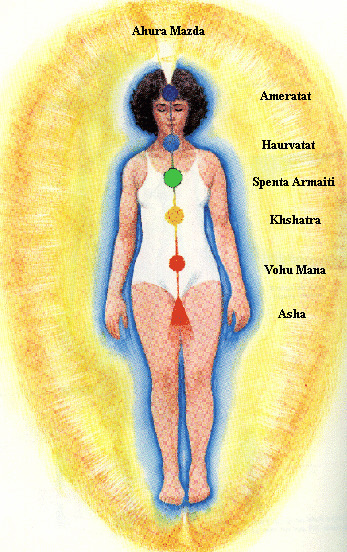
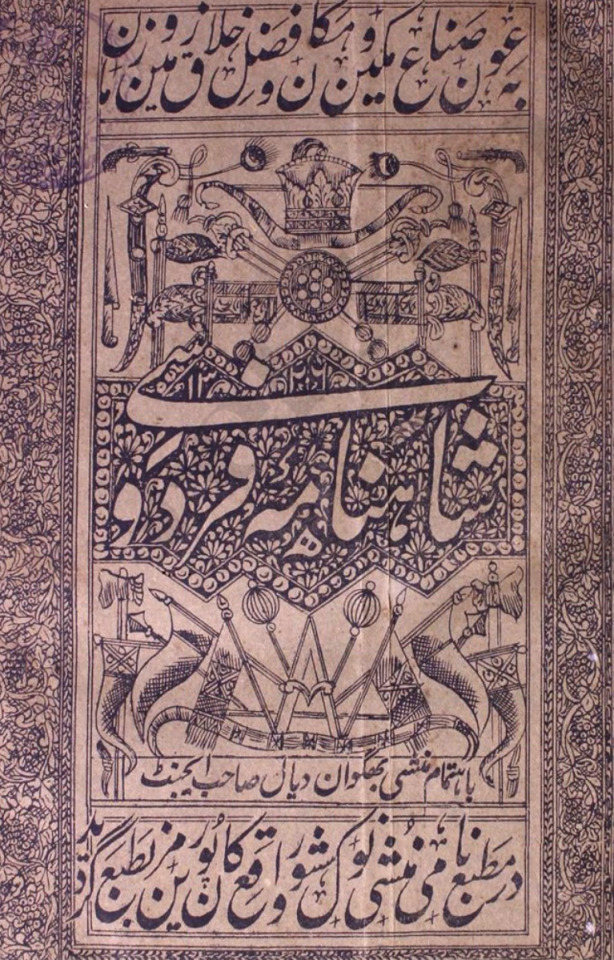

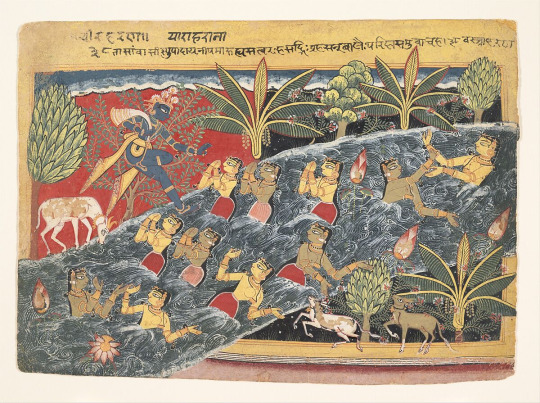

text from Pir Zia Inayat Khan's essay Persian & Indian Visions of the Living Earth in book Spiritual Ecology: Cry of the Earth
photos: Portrait of Shaikh Mu’in al-Din Hasan Chishti / The magical bird Simorgh / Shahnama / Amesha Spentas & Chakras / Shahnama cover Ferdowsi / Bhagavata Purana / Hazrat Inayat Khan
Ideas do not occur in a vacuum, and spiritual ideas are no exception. Sacred visions emerge from the disposition of human personalities, from the shape of historical events, and from the momentum of hallowed customs, but perhaps most fundamentally (transcendental sources aside), they emerge from “airs, waters, and places,” from the character of the landscapes in which they are born.
When epiphanies are redacted and passed down, the loamy pungency of their genesis frequently fades away, so that an abstract doctrine is perpetuated in place of an embodied insight. Such, however, is not always the case. Spiritual traditions are often the deepest repositories of a culture’s
knowledge of the ancient bond between person and planet, soul and soil.
[...] The forces of light will thus gain ground, advancing in ascendancy, dispelling malevolence, and speeding the long-awaited day known as the frashkart, when the whole of creation is to be purified, redeemed, illuminated, and rendered immortal.
[...] All that exists is of light, for light is existence itself, the very essence of apparency. God is the “Light of Lights,” and as light kindles light, creation proliferates as a cascade of illumination poured into the dark abyss of nonbeing. In this great chain of being, the angels are links, uniting the manifest world with the infinite brilliance that is its source.
[...] There follows a long, though not infinite, series of Intellects, each receiving light from the Light of Lights and its predecessors, and bequeathing light to its successors. By this causal chain the starry sky is lit up.
[...] Nothing exists on Earth without an underpinning in the world of pure light.
[...] In like fashion, Suhrawardi’s cosmology envisions a universe that is intensely alive and inherently sacred. All existence is the effusion, in pulsing waves, of the holy of holies, the Light of Lights. Transpiring in every clod, puddle, flaming wick, and fluttering breeze is an angelic presence, a sentient and radiant delegate of the cosmic order.
[...] The Qur’an begins, “Read in the name of your Lord” (96:1). What must be read are the ayat, the signs of God. The verses of scripture are signs, but so too are the verses inscribed ”on the horizons and in themselves” (41:53). The holy books of the prophets, Earth’s rapturous geography, and the interior landscapes of the human soul are all of a piece, all pages in a single book, the book in which God’s own story is told. This is a story without end, for, “If all the trees on Earth were pens and the ocean ink, with seven oceans behind it to add to its supply, yet the words of God would not be exhausted” (31:27).
[...] As widely different as were the theological views of Muslim Sufis and Hindu yogis, they had two spiritual perceptions fully in common: the vital livingness of the elements and the status of the human form as a microcosm encapsulating the breadth, depth, and range of the whole universe.
[...] The Vamana Purana sings, “Let all the great elements bless the dawning day: Earth with its smell, water with its taste, fire with its radiance, air with its touch, and sky with its sound.”
[...] Hindu acts of worship are traditionally preceded by bhutashuddhi, the ritual purification of the elements in the body and in the landscape. In this manner the inner and outer dimensions of the universe are brought into symmetry, and the human being is sanctified as an epitome of the surrounding totality. The human heart contains fire and air, sun and moon, lightning and stars, pronounces the Chandogya Upanishad.
The Chishti Sufis share this perception. In the Sum of Yoga attributed to Khwaja Mu’in al-Din Chishti, the entire cosmos is mapped onto the human form:
Know that by His power God Most High created the human body to contain all that He created in the universe: “We will show them Our signs in the horizons and in themselves, until they see …” (41:53). God created the twelve signs of the zodiac in the heavens and also in the human body. The head is Aries, the neck is Taurus, the hands are Gemini, the arms are Cancer, the chest is Leo, the intestine is Virgo, the navel is Libra, the phallus is Scorpio, the thighs are Sagittarius, the knees are Capricorn, the shanks are Aquarius, the soles of the feet are Pisces. The seven planets that revolve beneath the zodiac may be located thus: the heart is the Sun, the liver is Jupiter, the pulmonary artery is the Moon, the kidneys are Venus, the spleen is Saturn, the brain is Mercury, the gall bladder is Mars. God the Glorious and Most High made 360 days in the year, 360 revolutions in the zodiac, 360 mountains on the face of the Earth, 360 great rivers, and in the human body, 360 segments of bone (like the mountains), 360 arteries (like the rivers), 360 epidermal tissues (like the days of the year). The motion of the stomach is like the sea, hairs are like trees, parasites are like beasts of the jungle, the face is like a built-up city, and the skin is like the desert. The world has its four seasons, and these are also present in man: infancy is spring, youth is summer, quiescence is fall, and old age is winter. Thunder corresponds to the voice, lightning to laughter, rain to tears.
To bring microcosm and macrocosm into harmony, yogis and Sufis practiced, and still today practice, kriyas, or meditations, corresponding to the four elements. In his Secret of Love, the twentieth-century Chishti Sufi ‘Aziz Miyan describes the elemental kriyas in this manner: “Earth kriya: Meditate while incrementally burying the body in the ground, from feet to head. Water kriya: Meditate while sitting underwater, lying in the rain, or pouring water over the body. Fire kriya: Meditate before a fire, uniting first with the smoke and then with the flame. Air kriya: Meditate standing on a tree, hill, or roof, wearing a single cloth, facing the wind. Breathe in and out slowly and deeply, inducing the sensation of flight.”
[...] Hazrat Inayat Khan conceived of the Earth as an animate, and in some sense sentient, whole. He wrote, “If the planet on which we live had no intelligence it could not have intelligent beings on it.”9 If Earth possesses a kind of sentience, it follows that the planet may be susceptible to suffering, and Hazrat Inayat Khan made just such an assertion when he wrote, “My deep sigh rises above as a cry of the Earth, and an answer comes from within as a message.” The message of his talks and writings was a call to contemplate the moral and spiritual interconnectedness, and ultimate ontological unity, of all life.
[...] The sacred texts of Mazdaism, Hinduism, and Islam provide a profusion of illuminating perspectives on the nature of embodied existence. While there are undeniable differences in the worldviews communicated in these texts, certain key principles emerge as common understandings. Foremost among these is the insight that the manifest universe is a marvel of providential grace. Following on this is the perception that not only humans, animals, and plants, but all material forms partake of the pervasive light and power of creation, and bear recognition as spiritually alive. Further, the texts make clear the error of imagining human life as hovering autonomously above the natural world. Mystical contemplation of the human form conduces to the realization that the body is profoundly embedded within the wholeness of nature, a totality that each human physically and spiritually personifies. The Indo-Persian prophetic traditions agree: the Earth is alive, we live in and through her, and as we are in her keeping, so is she in ours.
4 notes
·
View notes
Text
The Infernal Pantheon: Baphomet
Hello! Starting a new series on the Infernals. I hope this helps educate and, as always, if something I say is incorrect, please (kindly) point me in the right direction.
Post + sources below.

BAPHOMET
Known as ‘The Satanic Goat’, the origins of Baphomet are unclear. It is likely that the symbol of Baphomet we know today is a bastardization of any number of pagan gods, specifically gods like Pan of the Hellenic pantheon. The similarities between the idols- the physical features such as hooves and horns, and spiritual associations such as fertility, could point to the idol commonly known as Baphomet to be manmade. With the trends of christianity painting anything they don’t understand as ‘evil’, this is entirely plausible.
However, the most popular image of modern Baphomet was created by Eliphas Levi in 1856. His depiction of Baphomet is one he created to be the universe or ‘god’. The symbols used in his book ‘Transcendental Magic: Its Doctrine and Ritual’ encompass Baphomet’s associations.
Baphomet is a powerful deity. She has many associations, namely the representation of balance- life and death, good and evil, as above, so below. He is also known as a deity of sex and fertility, due to her exposed breasts and, in some depictions, exposed penis. She is both the teacher and the student, as the desire for knowledge is what should drive her followers and worshipers.
Associations: Balance, sex, fertility, the elements, self love, knowledge, teachers and students, empathy, freedom.
Offerings: Coins, bones, books, skull imagery (animal and human), the elements, goat imagery, enchanted water, sigils, frankincense, dragon’s blood incense, tobacco, peaches, apples, oranges, coffee. Attending protests, activism, self-confidence, self care.
https://occult-world.com/baphomet/
https://blackwitchcoven.com/demons/baphomet/
32 notes
·
View notes
Text
"Disasters, revolutions, and volcanoes do not make love with the stars. The erotic revolutionary and volcanic deflagrations antagonize the heavens."
- Georges Bataille, The Solar Anus
A reversed pentagram, with two points projecting upwards, is a symbol of evil and attracts sinister forces because it overturns the proper order of things and demonstrates the triumph of matter over spirit. It is the goat of lust attacking the heavens with its horns, a sign execrated by initiates.
- Eliphas Levi, Transcendental Magic, Its Doctrine and Ritual
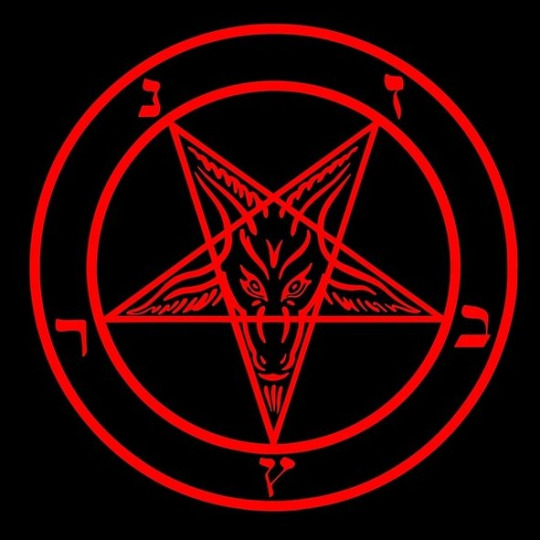
2 notes
·
View notes
Text
Categories of Practical Magic
So most people would think of “categories of magic” as meaning something like divination vs. cursing vs. potion-making, or fictional/Otherworldly schools of study, or otherwise differentiating things by the purpose of the magic and the tools it utilizes. What we’re doing, though, is defining a few "types" of practical, physical-realm results-based magic based on where they derive their power from and what sorts of rules they tend to follow, as they all have different considerations for how they work, especially depending on where you're working magic in the multiverse. That bit may sound absurd to some, but it is the basis of Otherworldly Reconstructionism, and therefore deserves an explanation, and honestly if the absurdity seems to be too much you may wish to reconsider some of your stances on Nonhumanity and metaphysics as a whole.
For those of you who understand that truth, knowing and understanding the different categories of magic can be insights into and potential fixes for using magic in multiple places. Pattern-based magic can be exceedingly difficult to work on the astral and oftentimes cause trouble when attempting to find substitutions for plants, minerals, and substances not found in this world, for example, and spirit-based magic will fail if you try to send someone or something to run an errand for you in a place they have no access to. By analyzing your situation, your tools, your methods, and your goals with these categories in mind, you can achieve greater success and understanding in your workings.
All of these categories may overlap, and we're certain there are more types of practical magic, but in general, there are four categories of magic aimed at achieving some sort of material or short-term life goal based on how they work: pattern-based, archetypal-based, spirit-based, and resonance-based.
Pattern-based
This is the format of most spells with ingredients based in correspondence. These types of spells often rely on physical, chemical patterns and actions and sympathetic magic according to the planets, elements, concepts, etc. associated with both historical and here-and-now physical Earth life.
Pattern-based magic can seem anywhere from eclectic to rote and formulaic, but at its base it relies on patterns of correspondence or similarity between things, and many books of spells and magical ingredients are rooted in pattern-based magic such as this, usually drawing on the lore of specific traditions such as the Doctrine of Signatures. Author Raven Kaldera calls this type of magic "thaumaturgic", however that specific term technically refers to practical or "low" folk magic aimed at getting results and improving circumstances. Pattern-based magic can still cause change on nonphysical levels and be used to achieve transcendental results.
This type of magic can actually cause problems and confusion when working a spell on a Nonhuman individual, as many do not have any sense of personal connection to their human body, appearance, or even chosen daily use-name, legally-backed or not. As a result, traditional taglocks may be useless unless modified or worked with unconventionally, and typical spell correspondences may as well be useless. (We’ll address these things in depth at another time.)
Archetypal-based
This is the realm of passed-down folk magic and the rituals and so-called superstitions that seem to have inherent power across time and space regardless of whatever reality, world, dimension, or whatever term you prefer from which that specific spell or ritual hails from. This can be due to historical usage building up an archetypal energy store, or that archetypal energy store existing elsewhere in the multiverse to be called upon, or some other unknown factor resulting in it becoming a more widely-accessible energy "program", so to speak.
Kaldera classifies this form of magic as "theurgic", however we ourselves, along with many others, use that term to denote works of magic that involve connecting and developing different parts of the self such as transcendental alchemy and invocation/evocation to achieve direct contact with other entities for reasons of self-progression and adopting traits of those entities.
Most Recon work will be at least partially archetypal-based magic, as it draws on Otherworldly archetypal patterns and energies that are pre-established and can be tapped into and potentially modified depending on where you are, and as such can have practical applications not aimed at personal betterment and ascension.
Spirit-based
Spirit-based magic is directly partnering with a spirit, deity, wight, ancestor, kami, egregore, oversoul, etc. to achieve results on any level that does not involve merging, possession, or emulation of said being. This sort of magic is the traditional reason behind the summoning of demons, imps, and familiars to perform tasks for the practitioner, ranging anywhere from ensuring a romantic/sexual partner is "delivered" to the mage, to hiding or revealing hidden treasure, or instructing the summoner in herbology or mechanical science. Asking a SoulBond or spirit companion to gather information for you is spirit-based magic! There's just a different set of agreements in place in those cases (that is, you already have an interpersonal relationship, working or not) when normally such things would involve propitiation, petition, and prayer, especially when approaching a new “business partner”.
Resonance-based
This is the most direct, but most tricky form of magic. It can be thought of as the basis for the other three types, as they all rely on resonance in some way, but with a modifier. This type of magic could be seen as a sort of "meta-magic", magic that transcends boundaries and awareness yet is inherent in all forms. Pattern-based magic seeks resonance through physical means. Archetypal-based achieves resonance through a storehouse or transmitter of magical energy. Spirit-based magic reaches resonance by using an intermediary. But all types ultimately aim for changing the energy of a person, place, thing, concept, scenario, etc. to a different goal energy, and resonance-based magic alters the resonance of something directly to achieve said goal. You seek to make that thing resonant with your goal, and to maintain that resonance long enough for it to become permanent, or at least fully manifested.
Maintenance of the resonance is often the hardest part, since nothing exists in a vacuum, and any energy by nature will move and alter things on some level by proximity. Whether that's the physical heat energy of water transferring to your body to raise your temperature on a material level, or the magical energy of your species transferring to your aura and energy signature to manifest unusual phenomena, there will always be contrary factors that redirect that energy, accidentally or intentionally.
Resonance-based magic is often the basis for pure energy work and astral magic, and can be difficult to learn and master for a whole host of reasons.
#My posts#philosophy of magic#otherworldly reconstructionism#basics#crypt's magic starter pack series
8 notes
·
View notes
Text

I'll probably be posting a lot about David Bowie for the next few days. Bowie was born on this date (Jan. 8th) in 1947, and he died on Jan. 10th, 2016.
Here, Guy the Cat is checking out “Bowie's Bookshelf.” Three years before David Bowie died, he shared a list of 100 books that changed his life. There are a lot of classics here but also some surprises - like “The Gnostic Gospels” by Elaine Pagels and “Transcendental Magic: Its Doctrine and Ritual” by Eliphas Levi (1856).
2 notes
·
View notes
Text
As Within, So Without.
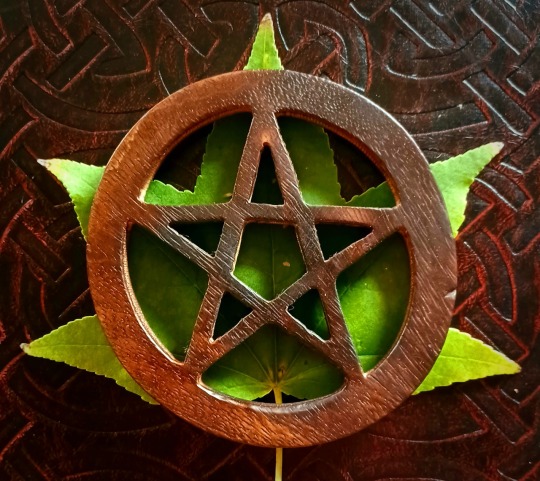
"The pentagram signifies the domination of the mind over the elements and it is by this sign that we bind the demons of the air, the spirits of fire, the specters of water, and the ghosts of earth. Equipped with this sign, and suitably disposed, you may behold the infinite through the medium of that faculty which is like the soul's eye, and you will be ministered unto by legions of angels and hosts of fiends.
It is the star of the Magi, the burning star of the Gnostic schools, the sign of intellectual omnipotence and autocracy.
Its complete comprehension is the key of two worlds - it is absolute natural philosophy and natural science. Its use, however, is most dangerous to operators who do not completely and perfectly understand it...
All mysteries of magic, all symbols of the gnosis, all figures of occultism, all kabbalistic keys of prophecy, are resumed in the sign of the pentagram; which Paracelsus proclaims to be the greatest and most potent of all. It is indeed the sign of the absolute and universal synthesis."
- Eliphas Levi
Dogme et Rituel de la Haute Magie
1854
#pentagram#pentacle#eliphas levi#transcendental magic#magic its doctrine and ritual#Dogme et Rituel de la Haute Magie#ceremonial magic#transcendentalism#hermetic philosophy#hermetic symbolism#Hermeticism#hermetics#as above so below#principle of correspondence#macrocosm#microcosm#metaphysics#consciousness#awareness#conscious experience#fourth dimension#higher functions#meditation#existentialism#ascension#gnosis#altar#foliage#correspondence#The All
55 notes
·
View notes
Photo

Bowie was a voracious reader. In 2013, he posted a list of his top 100 favorite reads on his Facebook page.
Interviews With Francis Bacon by David Sylvester
Billy Liar by Keith Waterhouse
Room At The Top by John Braine
On Having No Head by Douglass Harding
Kafka Was The Rage by Anatole Broyard
A Clockwork Orange by Anthony Burgess
City Of Night by John Rechy
The Brief Wondrous Life Of Oscar Wao by Junot Diaz
Madame Bovary by Gustave Flaubert
Iliad by Homer
As I Lay Dying by William Faulkner
Tadanori Yokoo by Tadanori Yokoo
Berlin Alexanderplatz by Alfred Döblin
Inside The Whale And Other Essays by George Orwell
Mr. Norris Changes Trains by Christopher Isherwood
Halls Dictionary Of Subjects And Symbols In Art by James A. Hall
David Bomberg by Richard Cork
Blast by Wyndham Lewis
Passing by Nella Larson
Beyond The Brillo Box by Arthur C. Danto
The Origin Of Consciousness In The Breakdown Of The Bicameral Mind by Julian Jaynes
In Bluebeard’s Castle by George Steiner
Hawksmoor by Peter Ackroyd
The Divided Self by R. D. Laing
The Stranger by Albert Camus
Infants Of The Spring by Wallace Thurman
The Quest For Christa T by Christa Wolf
The Songlines by Bruce Chatwin
Nights At The Circus by Angela Carter
The Master And Margarita by Mikhail Bulgakov
The Prime Of Miss Jean Brodie by Muriel Spark
Lolita by Vladimir Nabokov
Herzog by Saul Bellow
Puckoon by Spike Milligan
Black Boy by Richard Wright
The Great Gatsby by F. Scott Fitzgerald
The Sailor Who Fell From Grace With The Sea by Yukio Mishima
Darkness At Noon by Arthur Koestler
The Waste Land by T.S. Elliot
McTeague by Frank Norris
Money by Martin Amis
The Outsider by Colin Wilson
Strange People by Frank Edwards
English Journey by J.B. Priestley
A Confederacy Of Dunces by John Kennedy Toole
The Day Of The Locust by Nathanael West
1984 by George Orwell
The Life And Times Of Little Richard by Charles White
Awopbopaloobop Alopbamboom: The Golden Age of Rock by Nik Cohn
Mystery Train by Greil Marcus
Beano (comic, ’50s)
Raw (comic, ’80s)
White Noise by Don DeLillo
Sweet Soul Music: Rhythm And Blues And The Southern Dream Of Freedom by Peter Guralnick
Silence: Lectures And Writing by John Cage
Writers At Work: The Paris Review Interviews edited by Malcolm Cowley
The Sound Of The City: The Rise Of Rock And Roll by Charlie Gillete
Octobriana And The Russian Underground by Peter Sadecky
The Street by Ann Petry
Wonder Boys by Michael Chabon
Last Exit To Brooklyn By Hubert Selby, Jr.
A People’s History Of The United States by Howard Zinn
The Age Of American Unreason by Susan Jacoby
Metropolitan Life by Fran Lebowitz
The Coast Of Utopia by Tom Stoppard
The Bridge by Hart Crane
All The Emperor’s Horses by David Kidd
Fingersmith by Sarah Waters
Earthly Powers by Anthony Burgess
The 42nd Parallel by John Dos Passos
Tales Of Beatnik Glory by Ed Saunders
The Bird Artist by Howard Norman
Nowhere To Run The Story Of Soul Music by Gerri Hirshey
Before The Deluge by Otto Friedrich
Sexual Personae: Art And Decadence From Nefertiti To Emily Dickinson by Camille Paglia
The American Way Of Death by Jessica Mitford
In Cold Blood by Truman Capote
Lady Chatterly’s Lover by D.H. Lawrence
Teenage by Jon Savage
Vile Bodies by Evelyn Waugh
The Hidden Persuaders by Vance Packard
The Fire Next Time by James Baldwin
Viz (comic, early ’80s)
Private Eye (satirical magazine, ’60s – ’80s)
Selected Poems by Frank O’Hara
The Trial Of Henry Kissinger by Christopher Hitchens
Flaubert’s Parrot by Julian Barnes
Maldoror by Comte de Lautréamont
On The Road by Jack Kerouac
Mr. Wilson’s Cabinet of Wonder by Lawrence Weschler
Zanoni by Edward Bulwer-Lytton
Transcendental Magic, Its Doctrine and Ritual by Eliphas Lévi
The Gnostic Gospels by Elaine Pagels
The Leopard by Giusseppe Di Lampedusa
Inferno by Dante Alighieri
A Grave For A Dolphin by Alberto Denti di Pirajno
The Insult by Rupert Thomson
In Between The Sheets by Ian McEwan
A People’s Tragedy by Orlando Figes
Journey Into The Whirlwind by Eugenia Ginzburg
216 notes
·
View notes
Text

Eliphas Lévi, Transcendental Magic, Its Doctrine and Ritual (1896)
#eliphas levi#occultism#literature#bibliophile#upload#occult#transcendental magic#dogme et rituel de la haute magic#magick#pentagram#quotes#Transcendental Magic: its Doctrine and Ritual
120 notes
·
View notes
Photo

Éliphas Lévi, Transcendental Magic, Its Doctrine and Ritual
282 notes
·
View notes
Text
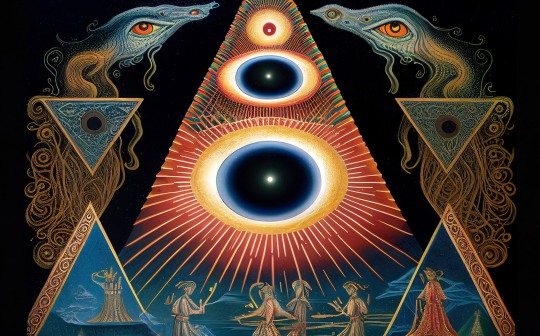
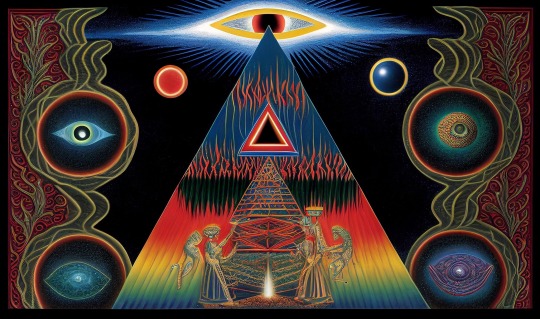
Triangle of Evocation 👁⃤
Talon Abraxas
“There is only one dogma in Magic, and it is this: The visible is the manifestation of the invisible, or in other terms, the perfect word, in things appreciable and visible, bears an exact proportion to the things which are inappreciable by our senses and unseen by our eyes.”
Èliphas Lèvi: Transcendental Magic: Its Doctrine and Ritual
40 notes
·
View notes
Photo

David Bowie’s 100 Favourite Books:
Interviews With Francis Bacon by David Sylvester
Billy Liar by Keith Waterhouse
Room At The Top by John Braine
On Having No Head by Douglass Harding
Kafka Was The Rage by Anatole Broyard
A Clockwork Orange by Anthony Burgess
Of Night by John Rechy
The Brief Wondrous Life Of Oscar Wao by Junot Diaz
Madame Bovary by Gustave Flaubert
Iliad by Homer
As I Lay Dying by William Faulkner
Tadanori Yokoo by Tadanori Yokoo
Berlin Alexanderplatz by Alfred Döblin
Inside The Whale And Other Essays by George Orwell
Norris Changes Trains by Christopher Isherwood
Halls Dictionary Of Subjects And Symbols In Art by James A. Hall
David Bomberg by Richard Cork
Blast by Wyndham Lewis
Passing by Nella Larson
Beyond The Brillo Box by Arthur C. Danto
The Origin Of Consciousness In The Breakdown Of The Bicameral Mind by Julian Jaynes
In Bluebeard’s Castle by George Steiner
Hawksmoor by Peter Ackroyd
The Divided Self by R. D. Laing
The Stranger by Albert Camus
Infants Of The Spring by Wallace Thurman
The Quest For Christa T by Christa Wolf
The Songlines by Bruce Chatwin
Nights At The Circus by Angela Carter
The Master And Margarita by Mikhail Bulgakov
The Prime Of Miss Jean Brodie by Muriel Spark
Lolita by Vladimir Nabokov
Herzog by Saul Bellow
Puckoon by Spike Milligan
Black Boy by Richard Wright
The Great Gatsby by F. Scott Fitzgerald
The Sailor Who Fell From Grace With The Sea by Yukio Mishima
Darkness At Noon by Arthur Koestler
The Waste Land by T.S. Elliot
McTeague by Frank Norris
Money by Martin Amis
The Outsider by Colin Wilson
Strange People by Frank Edwards
English Journey by J.B. Priestley
A Confederacy Of Dunces by John Kennedy Toole
The Day Of The Locust by Nathanael West
1984 by George Orwell
The Life And Times Of Little Richard by Charles White
Awopbopaloobop Alopbamboom: The Golden Age of Rock by Nik Cohn
Mystery Train by Greil Marcus
Beano (comic, )
Raw (comic, ’80s)
White Noise by Don DeLillo
Sweet Soul Music: Rhythm And Blues And The Southern Dream Of Freedom by Peter Guralnick
Silence: Lectures And Writing by John Cage
Writers At Work: The Paris Review Interviews edited by Malcolm Cowley
The Sound Of The City: The Rise Of Rock And Roll by Charlie Gillette
Octobriana And The Russian Underground by Peter Sadecky
The Street by Ann Petry
Wonder Boys by Michael Chabon
Last Exit To Brooklyn by Hubert Selby, Jr.
A People’s History Of The United States by Howard Zinn
The Age Of American Unreason by Susan Jacoby
Metropolitan Life by Fran Lebowitz
The Coast Of Utopia by Tom Stoppard
The Bridge by Hart Crane
All The Emperor’s Horses by David Kidd
Fingersmith by Sarah Waters
Earthly Powers by Anthony Burgess
The 42nd Parallel by John Dos Passos
Tales Of Beatnik Glory by Ed Saunders
The Bird Artist by Howard Norman
Nowhere To Run The Story Of Soul Music by Gerri Hirshey
Before The Deluge by Otto Friedrich
Sexual Personae: Art And Decadence From Nefertiti To Emily Dickinson by Camille Paglia
The American Way Of Death by Jessica Mitford
In Cold Blood by Truman Capote
Lady Lover by D.H. Lawrence
Teenage by Jon Savage
Vile Bodies by Evelyn Waugh
The Hidden Persuaders by Vance Packard
The Fire Next Time by James Baldwin
Viz (comic, ’80s)
Private Eye (satirical magazine, – ’80s)
Selected Poems by Frank O’Hara
The Trial Of Henry Kissinger by Christopher Hitchens
Flaubert’s Parrot by Julian Barnes
Maldoror by Comte de Lautréamont
On The Road by Jack Kerouac
Wilson’s Cabinet of Wonder by Lawrence Weschler
Zanoni by Edward Bulwer-Lytton
Transcendental Magic, Its Doctrine and Ritual by Eliphas Lévi
The Gnostic Gospels by Elaine Pagels
The Leopard by Giuseppe Di Lampedusa
Inferno by Dante Alighieri
A Grave For A Dolphin by Alberto Denti di Pirajno
The Insult by Rupert Thomson
In Between The Sheets by Ian McEwan
A People’s Tragedy by Orlando Figes
Journey Into The Whirlwind by Eugenia Ginzburg
347 notes
·
View notes
Photo

Transcendental magic, its doctrine and ritual
https://archive.org/details/transcendentalma00levi_0/page/n5/mode/2up
The work has recently attracted the attention of scholars for its views on the study of magic, religion, natural science and alchemy.[2] Lévi sees magic in between science and religion and believes it serves a potential conciliatory or mediating function between the two views.[3] Lévi rejects views, such as E. B. Taylor's, that magic or religion is inherently irrational and has been superseded by modern science. Instead he posits magic as an "esoteric science" and suggests that Hermeticism could be adapted to find the underlying truth behind all magical systems, calling for a "comparative magic."
https://en.wikipedia.org/wiki/Dogme_et_Rituel_de_la_Haute_Magie
18 notes
·
View notes
Text
A Witch’s Library 📚 🧙🏻♀️
A comprehensive reading list for beginner, intermediate & advanced practitioners 🔮

General reading for complete beginners:
'The Occult Book': A Chronological Journey, from Alchemy to Wicca’ by John Michael Greer
‘The Door to Witchcraft’ by Tonya A Brown
‘Learning Ritual Magic’ by John Michael Greer, Clare Vaughan, and Earl King
‘Paganism for Beginners’ by Althaea Sebastiani
‘Wild Witch’ by Marian Green
Explaining magick as science:
'The Book of Lies: A Disinformation Guide to Magick and the Occult’ (various authors)
‘Quantum Psychology’ by Robert Anton Wilson
‘Psychology and the Occult’ by Carl Gustav Jung
‘Dream Psychology’ by Sigmund Freud
Books for beginners about specific practices & traditions:
‘Wicca: a guide for the solitary practitioner’ by Scott Cunningham
‘Living Wicca: a further guide for the solitary practitioner’ by Scott Cunningham
‘High Magick’ by Damien Echols
‘Liber Null & Psychonaut: An introduction to Chaos Magic’ by Peter J. Carrol
‘The Temple of High Magic’ by Cüsters-van Bergen
'Out of the Shadows: an exploration of Dark Paganism and Magick' by John J. Coughlin
‘The Celtic Golden Dawn’ by John Michael Greer
‘The Druidry Handbook’ by John Michael Greer
‘Slavic Witchcraft’ by Natasha Helvin
‘Northern Magic’ by Edred Thorsson
‘A Modern Guide to Heathenry’ by Galina Krasskova
‘Neolithic Shamanism: Spirit Work in the Norse Tradition’ by Raven Kaldera & Galina Krasskova
‘Folk Witchcraft’ by Roger J. Horne
‘Fairycraft’ by Morgan Daimler
Intermediate & advanced books:
‘Angels and Archangels: A Magician’s Guide’ by Damien Echols
'Transcendental Magic: its Doctrine and Ritual' by Eliphas Levi
‘The Mysteries of Merlin: Ceremonial Magic for the Druid Path’ by John Michael Greer
‘Infernal Geometry and the Left Hand Path’ by Toby Chappell
‘The Corpus Hermeticum’ by G.R.S. Mead
‘The Tree of Life’ by Israel Regardie
‘The Middle Pillar’ by Israel Regardie
Ancient wisdom & Occult knowledge:
‘The Secret Teachings of All Ages’ by Manly P. Hall
'The Secret Doctrine' by Helena Blavatsky
‘The Book of Secret Wisdom’ by Zinovia Dushkova
'The Power of the Word: the Secret Code of Creation' by Donald Tyson
'The Kybalion: A Study of the Hermetic Philosophy of Ancient Egypt and Greece' by Three Initiates
Sacred texts & books that formed the foundations of specific practices:
The Kybalion
The Tibetan Book of the Dead
The Holy Vedas
The Holy Bible (Old & New Testament)
The Quran
The Kabbalistic texts
The Tao Te Ching
Grimoires, spellbooks, & reference guides:
‘The Element Encyclopedia of 5000 Spells’ by Judika Illes
‘The Element Encyclopedia of Secret Signs and Symbols’ by Adele Nozedar
‘A Witches’ Bible’ by Janet Farrar
‘The Magician’s Companion’ by Bill Whitcomb
‘Complete Book of Witchcraft’ by Raymond Buckland
‘Wicked Plants’ by Amy Stewart
‘The Book of Black Magic and of Pacts’ by Arthur Edward Waite
The Necronomicon
The Greater & Lesser Keys of Solomon
Miscellaneous esoterica:
‘High Weirdness’ by Erik Davis
‘The Doors of Perception’ by Aldous Huxley
‘The Book of the Law’ by Aleister Crowley
‘Waking the Witch: reflections on women, magic and power’ by Pam Grossman
‘The Power of Now’ by Eckhart Tolle
‘Prometheus Rising’ by Robert Anton Wilson
‘The Book of the Damned’ by Charles Fort
‘Sacred Geometry and Magical Symbols’ by Iva Kenaz
‘The Satanic Bible’ by Anton LaVey
#witchcraft#magick#spirituality#magic#high magick#slavic witch#damien echols#chaos magick#cosmic witch#chaos witch#baby witch tips#beginner witch#beginner witch tips#druidry#books#reading list#meditation#the golden dawn#the tree of life#beginner wiccan#wicca#wiccan#wiccablr#spellwork#academia#witchy books#occultism#hermeticism#astrotheurgy
286 notes
·
View notes